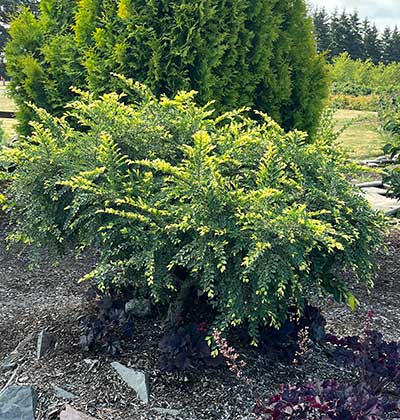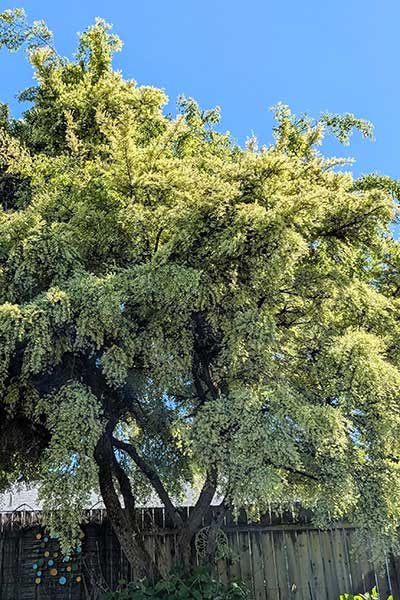Chinese Elm ‘Lois Hole’
- Scientific Name: Ulmus parvifolia ‘Lois Hole’
- Garden: Rain Garden
- Plant Type: Tree
- Evergreen/Deciduous: Deciduous
- Sun/Shade Exposure: Full Sun
- Moisture Requirements: Moist, Well-Drained
Plant Information
Grow in average, medium moisture, well-drained soils in full sun. Tolerant of light shade. Prefers rich, moist loams. Adapts to a variety of different soils and tolerates both wet and dry sites. Generally tolerant of urban conditions.
Noteworthy Characteristics
Ulmus parvifolia, commonly called Chinese elm or lacebark elm, is a medium-sized deciduous tree with a rounded crown and long pendulous branching. It is native to China, Korea and Japan. It is noted for its excellent foliage, multi-colored bark, rapid growth and good resistance to Dutch elm disease. Insignificant, small, reddish-green flowers appear in late summer. Flowers give way to single-seeded wafer-like samaras (each tiny seed is surrounded by a flattened circular papery wing) that mature in fall. Elliptic to ovate, shiny dark green leaves (to 3” long) have small teeth. Leaves typically turn an undistinguished dull yellow in fall, but sometimes produce more interesting yellows or reddish-purples. One of the most ornamental features of this tree is its mottled bark. On mature trees, bark flakes to reveal patches of gray, cream, orange, brown and green.
‘Lois Hole’ is a compact, sculpted form of lacebark elm that develops an irregular, shrubby branching framework to 12-15’ in height and breadth with age. Stems are graced with diminutive, deep-green leaves stenciled with a crisp white margin. Excellent in both full sun and part shade with tolerance to varied soil conditions. Striking champagne and yellow green spring leaf color and exquisite green and orange mottled plate-y bark.
Additional Data Source: https://www.brokenarrownursery.com/ulmus-parvifolia-lois-hole-lois-hole-lacebark-elm.html
Data Source
https://www.missouribotanicalgarden.orgPlant Photos







